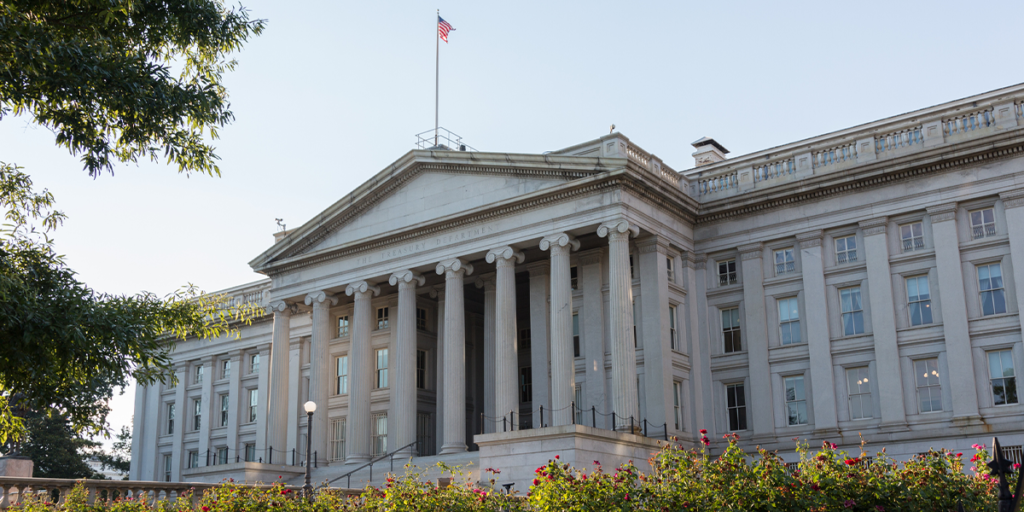The US Treasury’s latest foreign exchange report garnered little attention, perhaps because it rightly didn’t designate any countries for currency ‘manipulation’. But it is replete with sound technical analysis, plus worthy changes in the enhanced analysis framework. Assessing external imbalances and currency developments is now particularly difficult given the pandemic.
The report acknowledges that fiscal stimulus is sharply boosting the US’ current account deficit. But a rising US external deficit finds its counterpart in surpluses abroad. Accordingly, larger surpluses – even if to problematic FXR levels – may partly reflect the flip side of US policy. Further, the FXR understandably focuses on current accounts, but currency movements often reflect capital flows in part influenced by US policies. The Treasury could more humbly acknowledge the global currency market ramifications of US policies.
The assessment of China seems dry on the face of it. But the Treasury reiterates its longstanding and justified exhortations for China to substantially increase transparency around FX operations. Confusion abounds about differences between Chinese reserve developments and net foreign asset changes, and whether the latter embeds a degree of ‘stealth’ intervention. China should publicly clarify the situation.
The People’s Bank of China has long sought to gradually open the financial system and encourage capital inflows when the renminbi was facing appreciation pressures. This dampens upwards renminbi pressures as the Treasury overly decries, and the FXR could be more welcoming of careful gradual financial market liberalisation.
The analysis only scratches the surface of China’s enormous future growth and financial stability challenges. How these are tackled will have major global spillovers. The Treasury undoubtedly keeps an eye on them. The next report could help educate the public with a detailed discussion by including a special annex, for example.
Germany’s massive current account surplus rightly continues to exasperate the US, as it did under the Barack Obama and Donald Trump administrations. But with a new government taking Germany’s helm amid debates about the extent to which Germany’s debt brake should be adhered to or circumvented, the US Treasury has weighed in, exhorting the new team to use fiscal space and boost domestic demand including by bolstering climate spending and infrastructure investment.
The Treasury’s heavy focus on Vietnam, Taiwan and Switzerland continues. The emphasis on Vietnam remains overdone. Vietnam’s current account surpluses have risen considerably in recent years, but even around 2% of gross domestic product is modest compared with those of many East Asian economies. Pandemic lockdowns and lost tourism are impacting the external position. Surpluses have also been buoyed by firms moving value chains outside China, a development the US should welcome.
Even if Vietnam’s surpluses are now within Treasury’s thresholds, the country receives massive foreign direct investment, often larger than the current account surplus, helping drive upwards currency pressures and reserve increases. The Treasury should emphasise that such flows should feed through into currency appreciation rather than reserve build-ups. The same could be said for the Treasury’s discussion of India’s reserves.
The Treasury reached an agreement with Vietnam in July to address currency concerns. One might have thought the dong would appreciate strongly thereafter. But since then, the dong is puzzlingly up less than 1%.
The Treasury is once again soft pedaling on Taiwan and its history of massive undervaluation, intervention and surpluses. Perhaps this excessively generous light touch treatment reflects geopolitical sensitivities and Taiwan’s important global role in producing semiconductors and chips. But it may weaken evenhandedness.
The Trump Treasury wrongheadedly designated Switzerland, applying quantitative criteria rigidly, without properly accounting for factors generally not applicable for East Asian surplus countries. These include unsterilised intervention, the exchange rate’s role for monetary policy in a small open advanced economy that is a financial centre with limited domestic debt and subject to massive global safe haven flows. The Joe Biden Treasury should leave this inheritance behind.
This report also initiated worthy changes in technical criteria for the Treasury’s ‘enhanced analysis’. The Treasury broadened its coverage of trading partners and bilateral balances to include services. It first deployed a 3% of GDP threshold for current account surpluses in 2016. The Trump Treasury subsequently lowered that to 2%, presumably to pick up more countries. While there is no magical country threshold as country saving/investment relationships differ, 3% was a reasonable catch-all, while 2% risked picking up excess noise.
However, the Treasury augmented its current account criteria, including >1% of GDP current account gaps. While the Treasury’s model to calculate current account norms reflects outstanding work, a 1% deviation may be too small and pick up noise. In computing norms, many judgements are made about ‘desirable’ policies. The Treasury leaves us in the dark – what is a ‘desirable’ US, German or Chinese fiscal policy?
The FXR’s informative annex on foreign exchange transparency and practices also merits attention.
The latest FXR won’t grab many headlines, but it’s still a decent read.
Mark Sobel is US Chairman of OMFIF.
